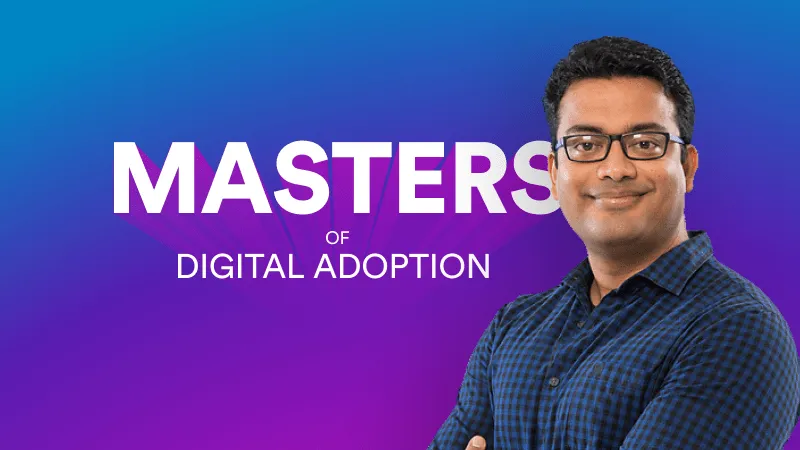How product quality can drive successful digital adoption


Quality is my passion. I’ve worked in software engineering and quality assurance for the last 16 years. For me, it’s about creating a product that not only solves the business challenge, but is also something users come back to use over and over again. When clients are paying for software or a product, we must ensure that we’re delivering something that provides real value for their investments.
What does real value mean? Well, it is different for every business; it can range from growing the bottom line, facilitating collaboration, increasing employee productivity, or even improving employee experience.
By unearthing and truly understanding the intended value expected from their digital transformation strategies, it can in turn drive successful digital adoption. Product development and quality assurance can then be geared towards the intended business value a client wants to gain.
Digital adoption is relevant to any new software being introduced to a business, but I would like to take the Userlane quality assurance process as an example of how successful digital adoption can be achieved. The following 5 steps are best practice for creating a digital product that will be widely adopted by users:
Table of Contents
Step 1: Understand business expectations
The most vital of steps; The step back.
Here, we establish a clear understanding of our client’s requirements for the new technology they will be introducing. Typically we find objectives sit within three key areas:
Financial – Enhance ROI of their digital transformation investments.
Technological – Ensure technology is being utilized and providing value to people and teams.
People – Create seamless user experiences that bring people back again and again to the product.
This activity informs how we approach the later steps. We also take the time to clarify the confines of the project, like the timeline or scope.
Step 2: Scope out the business requirements
Implementation informed by expectations.
In this phase we define what is needed from Userlane to implement the product successfully. We do this by listing out the business requirements as Acceptance Criteria that should include:
<who> must do <what> to accomplish <which goal>
Requirements scope is used for quality assurance purposes by implementing the process to assess variances between the business requirements and the actual outcomes.
This activity then provides a sort of blueprint for the testing phase.
Step 3: Product testing
Here we test the “product is developed right” and the “right product is developed”.
During this phase, we perform quality checks at different levels, such as – Unit, Integration, System, and Regression.
We also perform automated End2End Testing, Functional/ Exploratory Testing, and Non-Functional Testing like Performance, Load testing.
Most importantly, we are guided in this phase by the learnings gained in Step 1. Is the product doing what it needs to do? If yes, then we move to BETA testing.
Step 4: BETA customer testing
Gain real life insights into user experience.
Beta testing is the final round of testing before releasing a product to a wider audience. This is a very important step in quality assurance. This gives us an opportunity to hear directly from customers if the product is meeting their expectations.
The objective here is to uncover as many bugs or usability issues as possible in this controlled setting.
We mostly perform closed beta, where the testing is limited to a specific set of testers, which may be composed of current customers, early adopters, and/or paid beta testers. Sometimes they are conducted by diverting a certain percentage of users to the beta version of the application. Beta testing can either last for a set period or run until new issues stop being reported and all-important ones have been addressed.
Step 5: Roll-out
The last step – implementation.
In this final phase, we make sure everyone – Engineering, Product, Customer Success, and Management, is on the same page.
The client communication is activated via newsletters, announcements, release notes, etc. We will then either release the product or feature using a Controlled rollout (10%, 20%, 50%, 100%) or a ‘Big Bang’ rollout (100%).
Once the rollout is done, we collect feedback from clients and provide continued support as and when it is needed.
These five steps are what enables Userlane to help everyone feel empowered by technology. Mastering digital adoption does require many different disciplines and teams to pull together, but quality assurance in the product development stage is a vital piece of the puzzle.
My final piece of advice for mastering digital adoption is to make data driven decisions.

